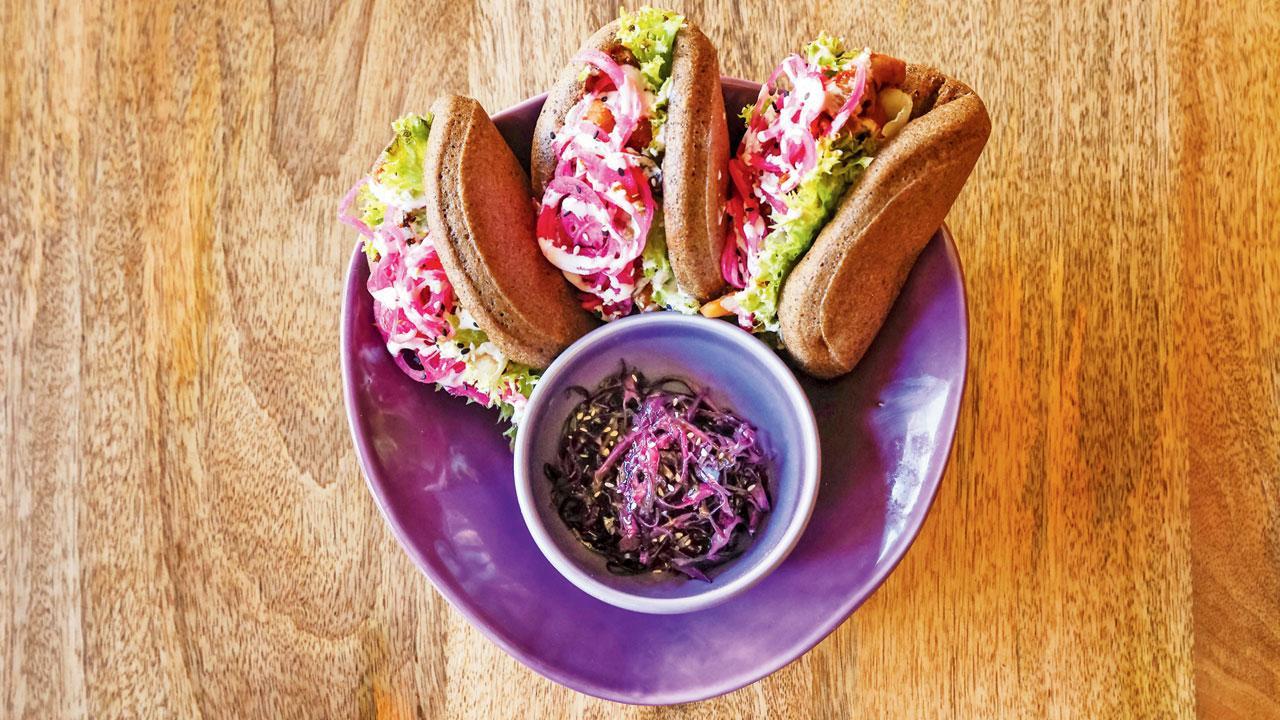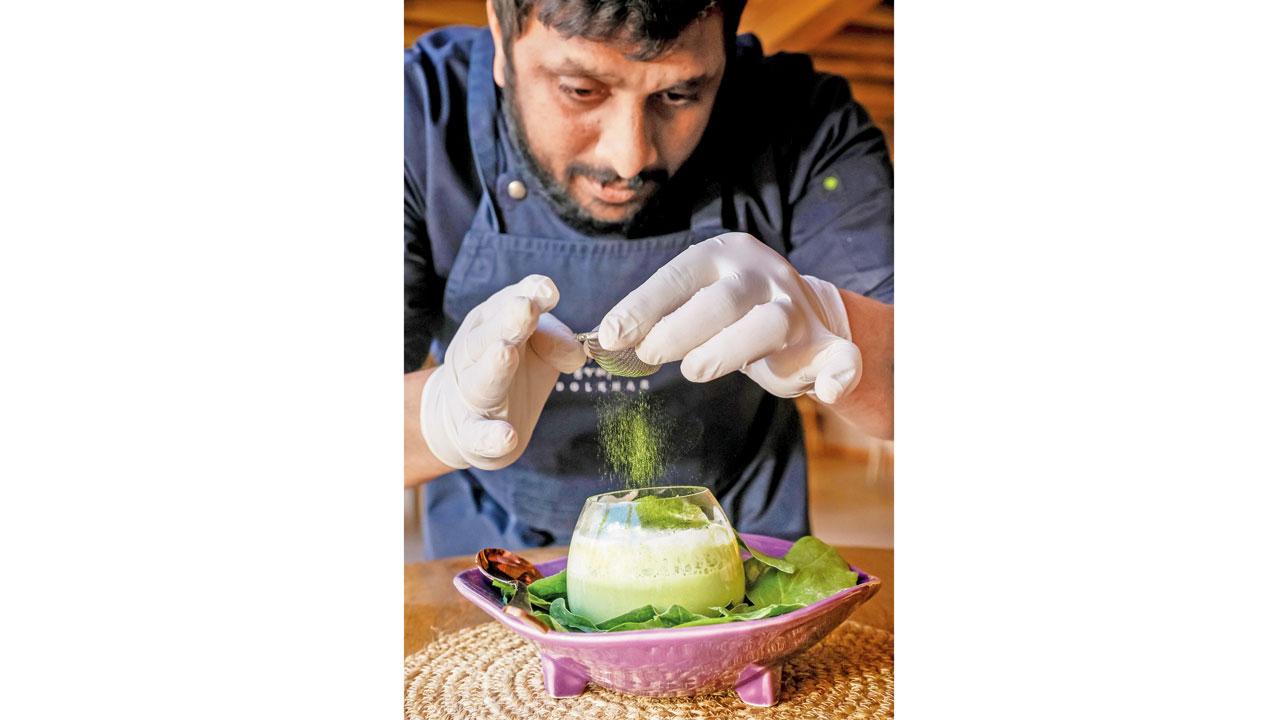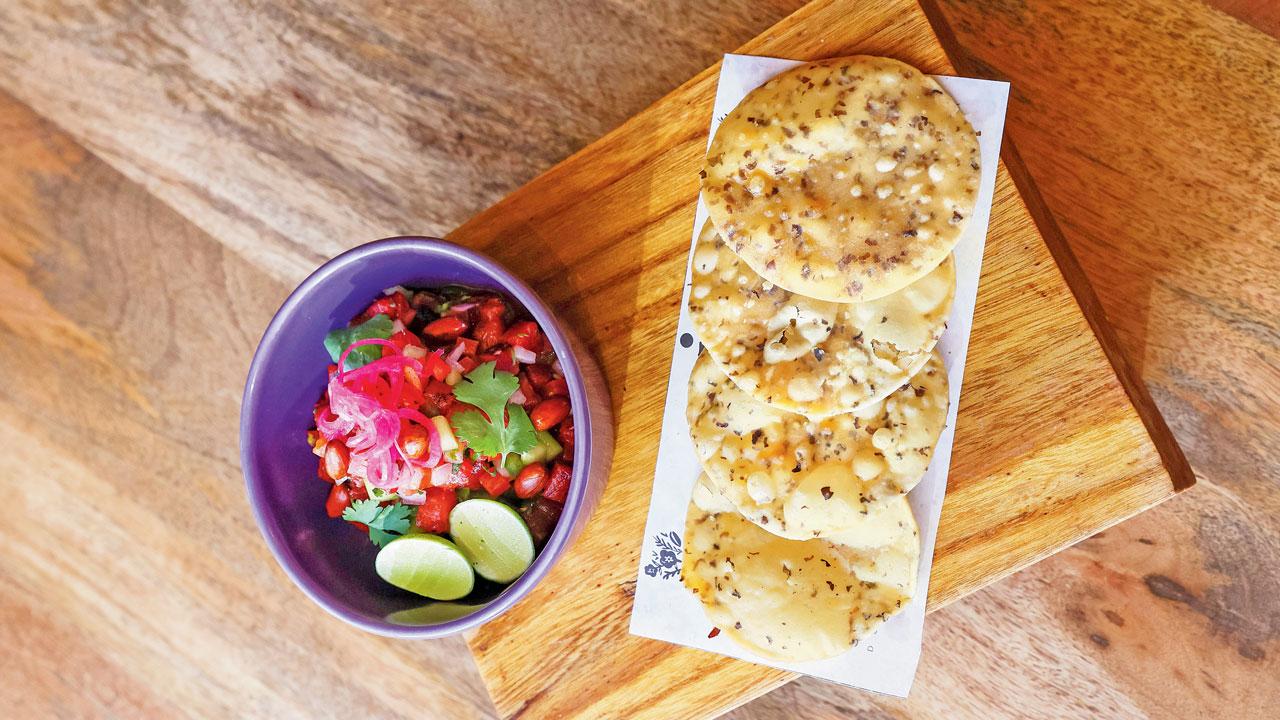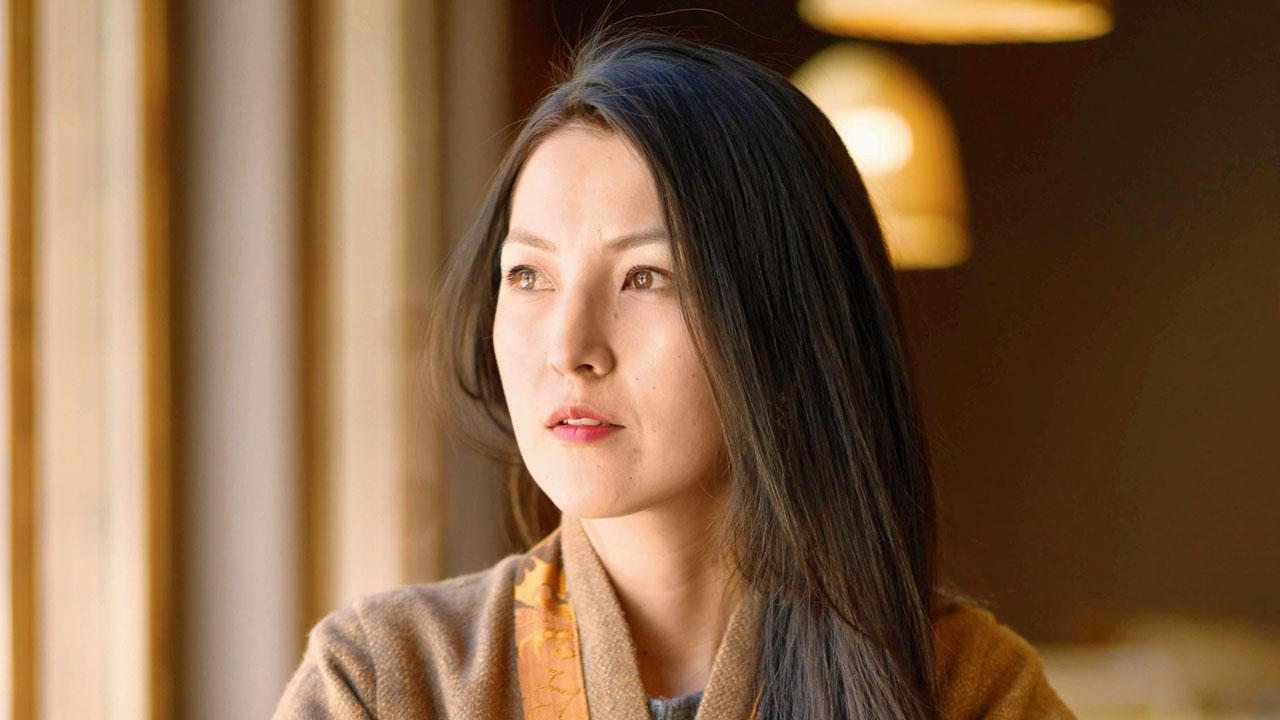A pop-up in the city will showcase indigenous ingredients from Ladakh in a Thai-inspired menu

Pulled Jackfruit Barley Bao
It’s ironic that most tourists’ posts on the gram, from Ladakh, include a photo of them slurping soupy instant noodles with a backdrop of its gorgeously rugged terrain. Ladakh is home to ingredients unique to its landscape, resulting in the development of a cuisine that is lesser-known to many. To shine a light on this, Rigzin Lachic founded Tsas by Dolkhar. The plant-based innovative restaurant will be moving out of their home in Leh to showcase its expertise in a collaboration with Mumbai’s Nara Thai.
ADVERTISEMENT

Chef Kalpesh Jadhav prepares green soup
Local is cool
“I’m from Leh but I never lived there until 2017. I didn’t grow up in the region but I would visit my grandparents in the summer holidays. I studied in Ooty, and later worked in Japan as a game developer, and eventually with a start-up in Delhi, after which I moved to Ladakh,” shares Lachic who has been running The Dolkhar, a seven-villa, boutique hotel in Leh since last April. It is set in a picturesque apple and apricot orchard owned by her grandmother.

Amuse Bouche
She was keen to live and work in Ladakh, and realised that 60 to 70 per cent of the region’s economy is driven by tourism. “I wanted to conceptualise an idea that would create a positive impact on the community and the environment.” Her philosophy of ‘community first’ is reflected in the idea of the property that is built with natural materials like mud, wood and stone; traditional techniques of construction are used while artworks and accessories from local artisans don the interiors.

Watermelon Ceviche
The same philosophy extends to the fare served at Tsas by Dolkhar, the restaurant housed within the property, (Tsas: kitchen garden in Ladakhi). “To preserve anything from the past, we have to also move forward without entirely abandoning the past. Local ingredients are at the centre of all our recipes; it could be a European or Japanese dish. We want to showcase Ladakhi produce on the world map. The terrain, altitude and climatic conditions are unique and that allows many ingredients to grow here — many of them in the wild,” she shares.
 Rigzin Lachic
Rigzin Lachic
Basking in the spotlight
Some Ladakhi ingredients like sea buckthorn and apricots, recently gained popularity but many others remain lesser known. “Apple and apricot are the major fruit trees. While multiple varieties of apricots grow across Ladakh, one type, the Raktsey Karpo, has received the GI [Geographical Indications] tag for the world’s sweetest apricots.” Lachic reveals, “The grains staple to Ladakh are buckwheat and barley. Plants like wild garlic, chives, rhubarb, wild caraway, wild nettle and capers are traditionally foraged and used as ingredients.”

Udai Pinnali
According to Lachic, even with common ingredients like tomatoes, there is a difference. “If you taste the tomatoes that grow in the Brokpa or Aryan Valley, which are at a lower altitude than Leh, you’ll realise that the flavour differs from those grown anywhere else in the world. We used sun-dried tomatoes, and they change the dish’s taste completely.” About introducing these ingredients to Mumbai’s foodies, she says, “A large part of traditional Ladakhi culinary practices revolve around preserving food for the harsh winter. This includes sun-drying and pickling. Some ingredients we bring here will also be in these forms. Only recently have we started getting access to ingredients from the plains and vegetables all year round.”
Fare call
The idea behind the pop-up was to elevate perceptions of Ladakhi and Thai cuisine. “The fundamental idea of promoting regional and local cuisine is what the team of Tsas and Nara Thai have in common. The approach that the Tsas team has taken by deep-diving and understanding Thai cuisine, and how best the ingredients that they bring in fit into how we approach food, has been refreshing and exciting for us. It’s not a mishmash or a quick plug-and-play idea, but one that stays true to the ethos of both cuisines,” says Udai Pinnali, CEO of Aditya Birla New Age Hospitality, Nara Thai India, adding that the concept was to bring the flavours of the coast and the mountains together.
“The ingredients combined beautifully to offer the right amount of umami, sweet and sour flavours,” shares Kalpesh Jadhav, head chef, Tsas by Dolkhar, who has co-created the menu with chef Prem Pradhan of Nara Thai. From the amuse-bouche, which is rice paper dumplings with fen noodles, to green soup with coconut and apricot kernel foam and a sea buckthorn chocolate tart for dessert, the menu holds many surprises. “We are making a red curry and coconut oil cured burnt watermelon ceviche, using the Ladakhi watermelon, which is the size of one’s palm.
Since it is organically grown, it has a natural sweetness and earthiness. We are curing it with red curry and coconut. When these three flavours combine, it creates a dance on the palate. We are also making a bao using jackfruit for the filling, which has a similar texture to pulled pork. In the large plates, we are making a Ladakhi gnocchi with our take on the Tibetan fried bread, which is made using apricots,” says Jadhav.
Beyond the obvious
Since it’s the first time that Tsas is moving outside Ladakh, Lachic believes the benefits of this pop-up will be multi-fold. “It will be a great experience for our team to realise where these ingredients stand, and offer us a fresh perspective. Such pop-ups also have a positive impact on the lifestyle of the Ladakhis. We were once a self-sustained agrarian community but we’ve witnessed a shift. Traditional practices, including agricultural ones, are dying, as they are linked to the demand for resources and local ingredients. With globalisation, Ladakh has better access to ingredients from the rest of the world. Shining the light on them will also hopefully impact the agricultural practices of the region. Ladakh, which has been sidelined for long, is now getting the limelight it deserves.”
On: December 2 and December 3; 12 pm (lunch), 7:30 pm (dinner)
At: Nara Thai, Amar Chand Mansion, Colaba
Call: 8355878888
Cost: Rs 1,500 per person
 Subscribe today by clicking the link and stay updated with the latest news!" Click here!
Subscribe today by clicking the link and stay updated with the latest news!" Click here!







